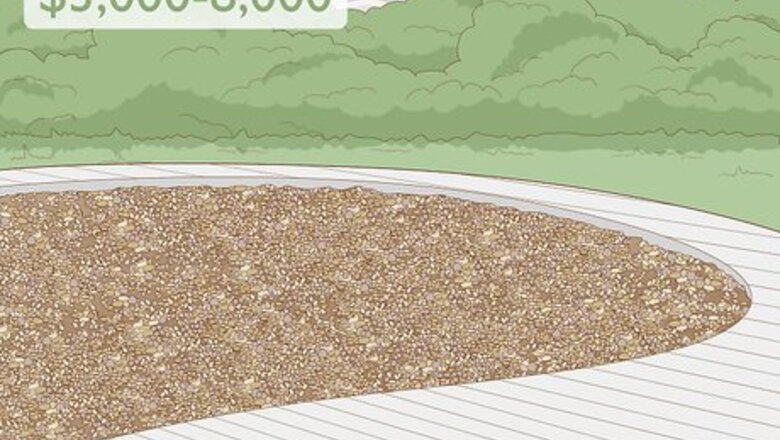
views
Selecting a Design
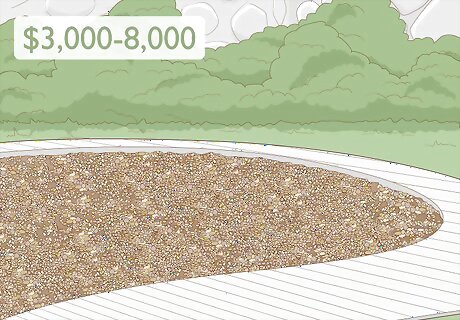
Fill in the pool with soil and gravel if you're looking for the least expensive option. The cheapest option for closing a ground pool is to fill it with soil and gravel and then lay new sod over the top. After the new sod grows for a few weeks, your yard will look like it never had a pool in the first place. Filling in a pool with soil and gravel will usually cost $3,000-8,000. The cost is largely dependent upon the size of your pool and the cost of insurance for contractors in your state or country. You can pay to have the contractor fully remove all of the pool’s concrete, but this will usually cost a lot of money and is generally unnecessary unless you want to build a house or garage where the pool is.
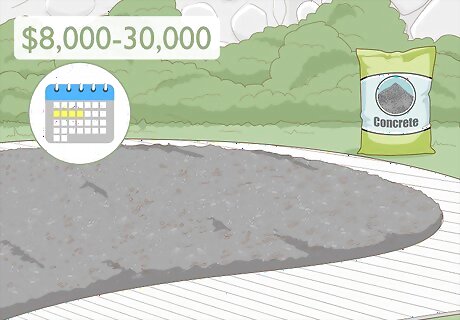
Pour concrete into the pool if you want to build on top of it. While it is considerably more expensive than getting a pool filled in with gravel, you can have a contractor pour concrete into your pool then lay grass over it. This will look identical to the cheaper alternative, which is filling the lawn in with soil or gravel. The big benefit is that you’ll be able to build a shed or garage on top of the concrete without worrying about structural integrity.Warning: In almost every state and country, it is illegal to build an inhabitable structure on top of a closed-in pool. You could still build a smaller structure over the concrete though. Having a contractor fill in a pool with concrete typically costs $8,000-30,000, depending on the size of your pool. This will usually take 3-4 days to complete. You can’t really build anything over a pool that has been filled with gravel and soil. The added weight can compress the ground underneath, which can cause the structure to become unsafe.
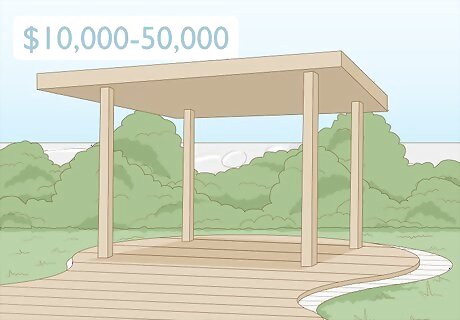
Hire a design firm to build a deck over your pool to give your yard a new look. If you want a custom-designed deck, fire pit, or gazebo, you can hire a design firm that specializes in pool-filling to cover and build on top of your pool. This can cost $10,000-50,000, but the results can be stunning, and you’ll have a customized structure built into your yard where the pool used to be. This is the most expensive option since you’ll need to pay engineers and designers to come up with a custom design that suits your needs.
Hiring a Contractor
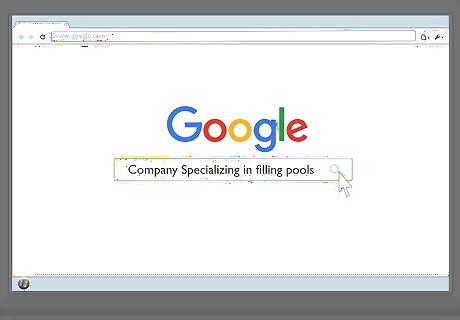
Search online for companies that specialize in filling in pools. Once you’ve determined how you want to fill in your pool, you can start to look for a contractor that specializes in pool-filling. If you’re looking to get a deck built over your pool, contact high-end architectural firms as well to see if they build around pools. Create a list of contractors to contact to get quotes.Warning: Pay attention to reviews when considering a contractor. If a company has a lot of negative reviews, it’s likely that they’re well-earned.
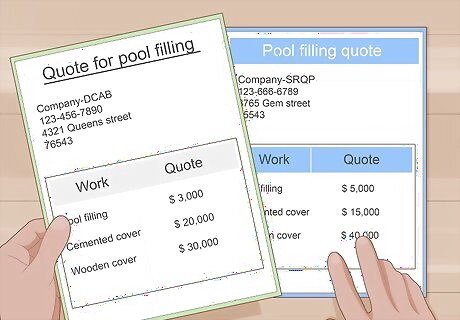
Get quotes from multiple companies to get the fairest price possible. Contact every contractor on your list and ask for a quote. A lot of companies will send out an employee to inspect the job and give you a free estimate. Write down the quote that each company gives you so that you can make an informed decision. If a company doesn’t offer free estimates, call around to see if the other companies in your area do. Call the first company back and see if they’ll waive their estimate fee after you tell them that you found other companies that do it for free.
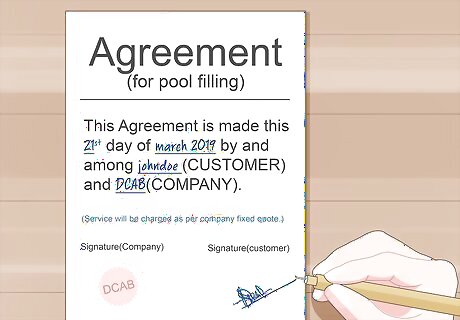
Sign a contract and put any requirements in writing. A contractor for a job of this size will have a contract that you need to sign. Review it carefully and put any requirements in writing, like re-sodding or coming back for repairs if the ground breaks. If you have any questions about the contract, consult a lawyer. It should be built into the contract that if the company’s sod ends up sinking into the pool or the concrete starts cracking before a year has passed, that they’ll come back and fix it. If it isn’t, ask for it to be added.
Getting Legal Clearance
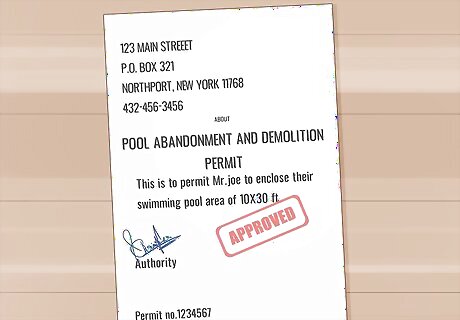
Get a permit if your local government requires one. In many cases, the contractor will be able to handle this for you. If they can’t, they will at least be able to point you in the right direction. Call your city’s building permits or business services department and ask about the application process. You will need to include your insurance information, contractor’s information, and any written plans for your pool.Warning: Pool filling almost always requires a local municipal permit. The permits for pool filling, abandonment, or demolition are typically a couple hundred dollars. Your contractor will not be able to start work until the permit is approved. In many cases, the contractor will be able to walk you through the process.
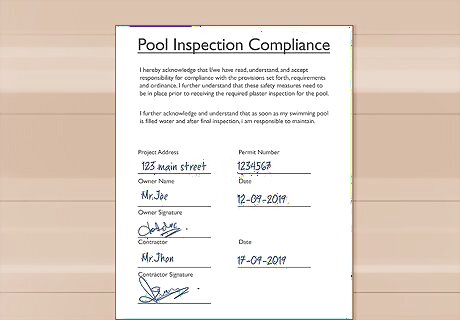
Comply with any city inspections before work begins. Before you’re approved for your permit, the city that you live in may send a technician out for an inspection. They may also send a building inspector out to your home to ensure that everything is up to code. Allow any city contractors or inspectors on to your property to ensure that your permits are approved. The city may need to dig around your pool to identify and mark any utility lines.
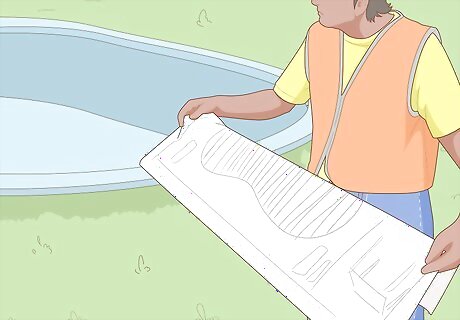
Hire an engineering technician to approve your plans. Even if the city you live in doesn’t require one, you may want to hire an engineering technician if you don’t know where your utility lines are or if there are any structures within 20 ft (6.1 m) of your pool in any direction. The engineering technician will be able to determine if there are any problems with your plans. Ask your contractor if they have an engineering technician that they work well with. They may even have an engineering technician on their payroll that you can use.
Overseeing the Work
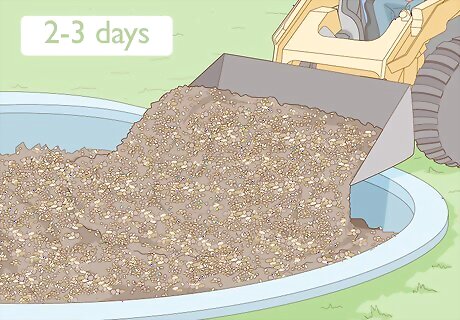
Wait 2-3 days for the contractor to fill in your pool with gravel and soil. To start, the contractor will drain the water in your pool and then disassemble it by breaking up the concrete. Most often, the broken concrete will be left at the bottom of the pool before it’s covered with soil or gravel. The contractor will be able to lay new sod and grass over the hole once it’s filled in to make your yard look uniform. This process typically takes 2-3 days since there are a lot of materials that need to be brought to your pool. It takes thousands of pounds worth of gravel and soil to even fill in a smaller in-ground pool. Make sure that the contractors are patting the soil and gravel down with their crane or excavator as they fill the pool. If they don’t compact the soil and gravel, the filled-in area could sink after it rains.
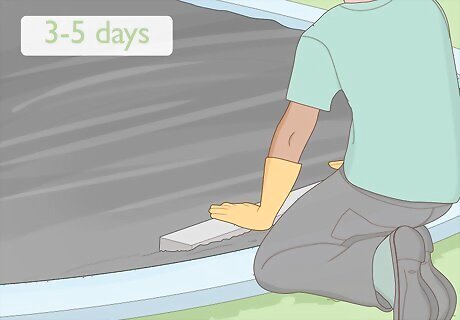
Allow 3-5 days for a contractor to pour concrete in your pool. The contractors will likely remove the upper portions of your pool carefully and then bring a cement-mixing truck out to your home before filling and smoothing the surface out. The contractor may require more time if they need to re-pour any sections. Once the concrete hardens, the contractor will lay new sod and grass over the hole. Filling a pool with concrete is a great idea if you regularly use this portion of your yard, since the ground underneath will be more stable than it would be if you simply filled it with soil. This does mean that the contractors will need more time to work though.
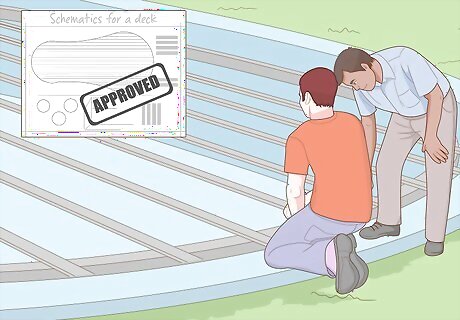
Get the schematics for a deck or new structure approved before work starts. An architectural firm needs a few weeks to inspect, design, and run tests on your pool before work can begin. Once schematics are submitted, checked, and are approved, their contractors will likely install steel joists in the concrete frame of the pool and then build on top of it. This can be a time-consuming process and may take several months to complete. Depending on where you live, the design and plans for a new structure may need to be checked by a municipal engineer. This can take a long time. If they don’t fill the pool with concrete, you’ll probably need to keep the pump system for your pool. When it rains or snows, the water can accumulate in the pool under your deck or structure.
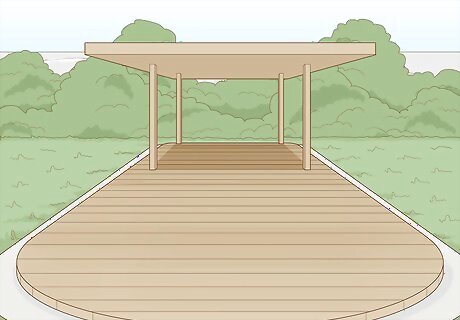
Enjoy your new yard. Once the permits are approved and any deposits have been paid, the contractor can begin working on filling in your pool. When they finish their work, follow any after-care instructions such as watering new sod or staying off of the ground where the pool used to be for 3-4 days. After the appropriate amount of time has passed, enjoy your new deck, yard, or lawn!



















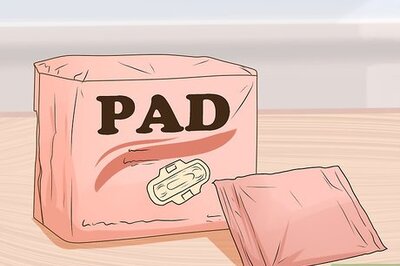
Comments
0 comment